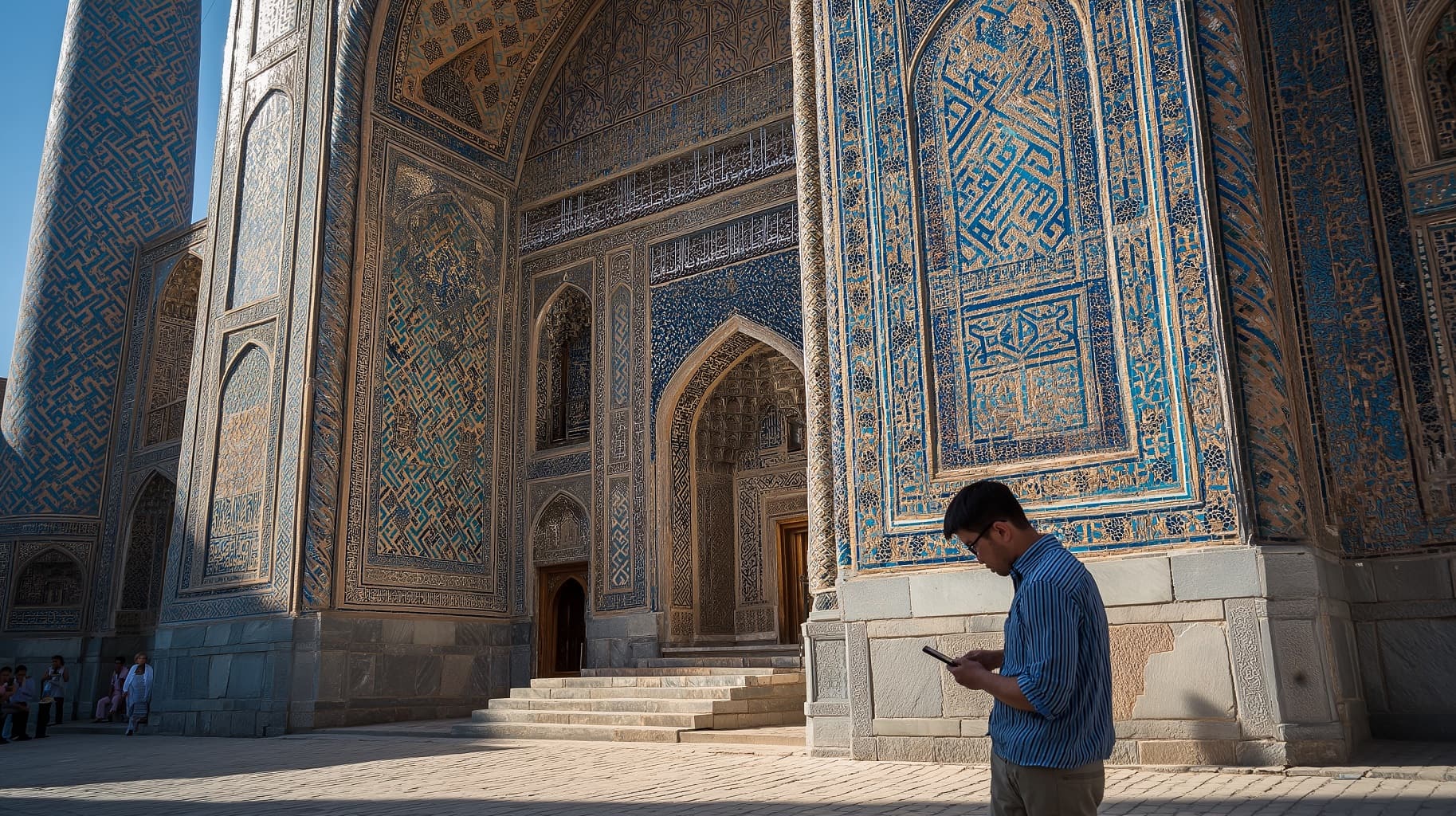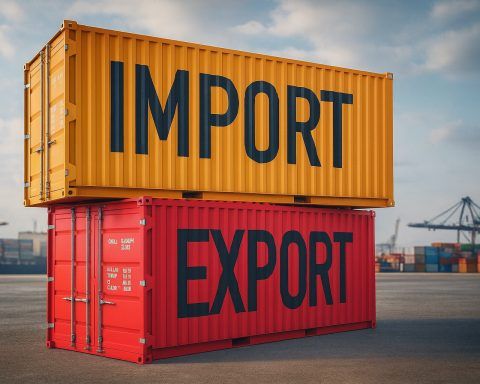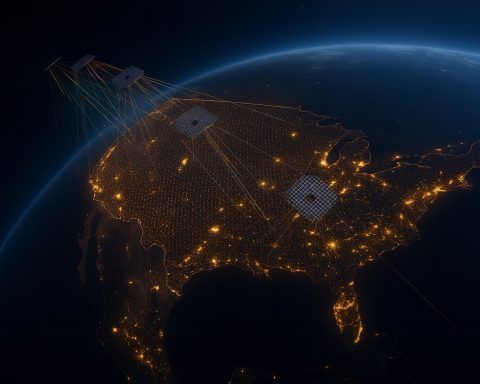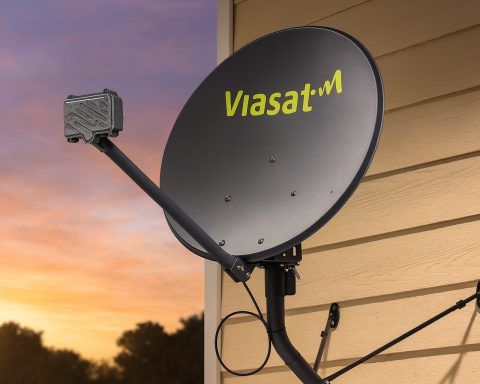- Uzbekistan’s internet infrastructure has shifted from slow dial-up to fiber and 4G/5G networks, with Uztelecom expanding fiber backbones and boosting international capacity to 3.2 Tbps in 2022.
- As of 2022, 2G networks blanket 99% of the population, 3G covers about 90%, and 4G LTE reaches roughly two-thirds of residents.
- In 2023, Uzbekistan began rolling out 5G with thousands of base stations, with the first phase targeting full 5G coverage in Tashkent and partial coverage in provincial centers.
- Uztelecom dominates fixed broadband, carrying 98% of fixed connections, while private mobile operators include Ucell, Beeline Uzbekistan, Mobiuz, and Perfectum Mobile.
- There were about 29.5 million internet users in January 2024, representing 83.3% of Uzbekistan’s 35.4 million people.
- In 2023 the government removed a 10% excise tax on mobile services to reduce consumer bills.
- A 2024 New Telecommunications Law aimed to create an independent regulator and encourage infrastructure sharing, moving licensing and oversight away from the telecom ministry.
- Starting in 2025 private ISPs are slated to gain direct access to international bandwidth, with a presidential decree calling for direct international bandwidth for all licensed operators by January 1, 2025.
- Starlink received a license to operate in Uzbekistan in late 2024 and is not expected to go live until 2025–2026, while OneWeb signed an MoU with Uzbekspace in 2022.
- Freedom House rated Uzbekistan Not Free in 2024 (27/100), with TikTok blocked since 2021 and a July 2022 regional internet shutdown in Karakalpakstan.
Internet Infrastructure: From Dial-Up to 5G
Uzbekistan’s internet infrastructure has rapidly evolved from slow dial-up and DSL connections to modern fiber-optic and wireless networks. The state-run operator Uztelecom has extended fiber-optic backbones beyond major cities in recent years [1], boosting fixed broadband capacity off a historically low base. Today, most urban neighborhoods can access fiber-to-the-building (FTTB) or DSL broadband, while rural areas increasingly rely on mobile networks for connectivity. Mobile coverage is extensive – 2G networks blanket 99% of the population, 3G covers about 90%, and 4G LTE reaches roughly two-thirds of residents as of 2022 [2]. In 2023, Uzbekistan began rolling out 5G: thousands of base stations have been upgraded or built, with the first phase aiming for full 5G coverage in the capital Tashkent and partial coverage in provincial centers [3] [4]. As these upgrades continue, even remote villages are gradually coming online via a mix of fiber links, microwave relays, and cellular towers.
Despite this progress, last-mile connectivity in some rural and mountainous areas remains a challenge. Many outlying villages until recently had little to no internet due to sparse infrastructure and electricity shortages [5] [6]. The government and international donors are targeting this digital divide with projects to extend fiber and power supply to remote communities. For example, the World Bank-backed Digital CASA initiative and state programs have laid thousands of kilometers of fiber in neighboring Kyrgyzstan’s highlands [7] [8], and similar efforts are underway in Uzbekistan’s countryside. The goal is to ensure that even the hinterland – from the desert steppes of Karakalpakstan to the Ferghana Valley’s farms – can access reliable broadband. In practice, some rural users still contend with spotty 2G/3G signals and outages, but the coverage maps are steadily filling in.
Key Providers: State Monopoly and New Competitors
Uzbekistan’s internet services are dominated by a handful of telecom companies, led by the state-owned behemoth Uztelecom. Uztelecom controls the national fixed-line network and reportedly carries 98% of all fixed broadband connections [9]. Through its retail arm (often branded as UZONLINE) and subsidiaries, Uztelecom provides DSL and fiber broadband to homes and businesses, as well as fixed telephone service (which is gradually being replaced by VoIP over fiber) [10]. Uztelecom also operates a mobile division, Uzmobile, making it a vertically integrated incumbent. In recent years, the government invested heavily in Uztelecom to expand fiber infrastructure and upgrade international bandwidth – the carrier boosted Uzbekistan’s international internet capacity to 3.2 Tbps in 2022 [11], aiming to improve speed and reliability nationwide.
Alongside the state monopoly, several private operators compete, especially in the mobile arena. MNOs (Mobile Network Operators) include Ucell, Beeline Uzbekistan, Mobiuz, and Perfectum Mobile [12]. Ucell (formerly part of Telia Company until 2018) and Beeline (owned by VEON Group) are leading private carriers, each with large subscriber bases and nationwide 3G/4G networks. Mobiuz is a rebranded successor to an ex-MTS venture and is now government-owned, while Perfectum is a smaller operator historically focused on CDMA but pursuing 4G/5G upgrades. These operators have spurred a competitive mobile market – Uzbekistan has 33.8 million mobile connections (SIMs) active, equivalent to 95.5% of the population [13]. However, the ISP market for fixed internet remains less competitive. A few independent ISPs (like East Telecom and smaller cable or wireless ISPs) exist, but their reach is limited and they often resell capacity from Uztelecom. Until recently, Uztelecom exclusively controlled the country’s connection to the global internet, effectively a monopoly on the international gateway. This has meant all other providers had to route traffic through Uztelecom’s channels, a situation long blamed for high prices and bottlenecks.
Regulatory changes are afoot to loosen Uztelecom’s grip. Under a new policy, private ISPs will be allowed direct access to international internet channels starting in 2025 (initially as a pilot program) [14]. In fact, a presidential decree called for giving all licensed operators their own direct international bandwidth by January 1, 2025 [15]. As of mid-2025, implementation is still catching up – Uztelecom’s external gateway monopoly technically remains in place [16] – but the move signals a shift toward a more open wholesale market. Industry stakeholders expect that breaking this monopoly will foster competition, lower transit costs, and reduce Uzbekistan’s reliance on any single provider or route. Further, the government abolished a 10% excise tax on mobile services in 2023 [17] to make telecom access more affordable and stimulate usage. These measures, alongside the New Telecommunications Law (enacted at end of 2024), aim to modernize the sector and attract investment.
Soaring Internet Penetration and Coverage Gaps
Internet use in Uzbekistan has surged dramatically in the past few years, reaching the vast majority of the population. There were about 29.5 million internet users in the country as of January 2024, which represents 83.3% of Uzbekistan’s 35.4 million people [18] [19]. This is a remarkable jump from just a decade earlier, when barely a quarter of citizens were online. By early 2025, some estimates put internet penetration even higher – official data from Uzbekistan’s ITU reports indicated roughly 89% of the population used the internet in 2023 [20]. The difference in figures owes partly to methodology, but the trajectory is clear: digital access has become near-ubiquitous in daily life. For context, about 5.9 million Uzbeks remained offline at the start of 2024 [21], many of them in older age brackets or remote locales. The expansion of mobile broadband has been the driving force behind this connectivity boom, complementing the growth of home broadband. In fact, household surveys show the share of people (age 10+) who use the internet at home rocketed from ~50% in 2021 to 79.2% by mid-2024 [22]. This suggests that broadband access – whether via home Wi-Fi or mobile data on personal devices – is reaching into most households across Uzbekistan.
Yet beneath these rosy national averages lie persistent disparities between urban and rural areas. Urban centers like Tashkent enjoy near-saturation connectivity, with high rates of fiber subscription and smartphone use. The capital has the country’s highest internet penetration and far denser infrastructure than outlying regions [23]. In Tashkent City (a distinct administrative unit), it’s common to find public Wi-Fi hotspots, multiple ISPs vying for apartment broadband customers, and mobile 4G speeds that rival those in Europe. By contrast, many villages and small towns lag behind – local officials note that connectivity indicators in some rural districts trail the capital’s by a wide margin [24]. For example, the fertile Fergana Valley and Karakalpakstan’s far-flung settlements historically had fewer high-speed options; some communities only got their first 3G base station or fiber node in the past couple of years. As a result, internet usage rates outside major cities have been lower. Residents of remote areas often cite cost of devices, lack of local providers, and patchy network quality as hurdles. Nonetheless, the gap is gradually closing. The nationwide push for 4G and the rollout of new backbone links (including planned fiber routes through Turkmenistan-Iran and Kyrgyzstan-China to diversify connectivity [25] [26]) promise to improve the reach and resilience of Uzbekistan’s networks. The government has also prioritized connecting public institutions in the regions – thousands of schools, healthcare centers, and government offices have been provided internet access, creating community hubs of connectivity.
Another notable divide is the digital gender gap. Although detailed recent figures are scarce, observers note that women in Uzbekistan use the internet at lower rates than men, especially in conservative rural areas. Socio-economic factors and traditional norms play a role – for instance, men are more likely to own smartphones or have independent internet subscriptions. The government has acknowledged these disparities and included digital inclusion for women and youth as part of its “Digital Uzbekistan 2030” strategy. Ensuring that the benefits of the internet reach all demographics is seen as critical for development; as of the early 2020s, bridging gender and urban-rural gaps remains an ongoing challenge.
Speed and Affordability: Fast Improvements, Mixed Reality
In tandem with wider access, Uzbekistan’s internet speed has improved significantly, though it still lags global leaders. According to Ookla’s Speedtest data, as of early 2024 the median mobile broadband download was around 24–27 Mbps, and fixed broadband about 55–59 Mbps [27] [28]. These represented strong year-over-year gains – mobile speeds jumped nearly 70% in 2023 alone [29], reflecting the upgrade of 4G networks and perhaps initial 5G trials. By mid-2025, speeds climbed further: Uzbekistan’s mobile internet averaged 53.3 Mbps (ranking 72nd of 104 countries) and fixed lines averaged 83.6 Mbps (76th of 155 countries) [30]. This places Uzbekistan roughly in the middle of the pack globally, and on par with or ahead of some regional peers. For instance, neighboring Kazakhstan’s mobile internet was measured at 53.7 Mbps around the same time [31]. Notably, Uzbektelecom’s drive to expand fiber has boosted urban broadband speeds – many homes in Tashkent can now get 100 Mbps or higher plans. The national backbone’s expansion to 3.2 Tbps capacity [32] also reduced some international congestion.
However, the on-the-ground experience can be less impressive than the numbers suggest. Users frequently complain of sluggish connections and dropouts, especially outside the capital [33] [34]. While a speedtest might show tens of Mbps, real-world performance can suffer from local bottlenecks: outdated last-mile lines in older neighborhoods, overloaded cell towers during peak hours, or throttling when crossing into international traffic. In rural and semi-rural areas, even 4G networks sometimes deliver only 3G-equivalent speeds, and fixed broadband options like ADSL can crawl due to line lengths. Still, compared to a few years ago – when 5 Mbps was considered good – the progress is palpable. Watching HD videos, teleconferencing, and other bandwidth-heavy activities have become more feasible for many Uzbek users, especially in cities.
Affordability of internet service has also improved, aided by rising competition and supportive policies. The cost of entry-level data plans relative to income has been dropping. In 2023, a fixed broadband package of 5 GB cost about 4.19% of GNI per capita, while a 2 GB mobile data plan cost only 0.71% of GNI per capita on average [35]. This mobile data figure easily meets the UN affordability target (which is 2% of monthly income for 1 GB), suggesting that basic mobile internet is within reach for most households. Indeed, mobile internet in Uzbekistan is considered “dirt cheap” by regional standards – unlimited or large data bundles from operators like Beeline or Ucell can be found for the equivalent of $10–$15 per month, and more limited plans for just a few dollars. Fixed broadband is pricier: a home fiber connection might run $15–$25 monthly for moderate speeds, a significant sum in a country where the 2022 GNI per capita was about $2,190 [36]. The removal of the 10% telecom tax in 2023 [37] directly reduced consumers’ bills for mobile and internet services, improving affordability further.
Nonetheless, for low-income families and those in remote areas, cost remains a barrier. They must also invest in smartphones or computers, which can be expensive relative to wages. The government’s policy of requiring device registration (via IMEI codes) and the earlier one-time fee for imported phones [38] added minor financial hurdles, though that process was streamlined in 2020 to shift the burden to vendors. On balance, internet access is steadily getting cheaper in Uzbekistan, and price is less of a limiting factor now than it was a decade ago. The bigger obstacles for the remaining unconnected tend to be infrastructure availability and digital skills, rather than tariff levels.
Government Policies: Between Reform and Control
The Uzbek government plays a dual role in internet access – on one hand investing in and liberalizing the telecom sector, and on the other maintaining tight control over networks and content. Recent policy reforms have focused on modernizing regulation and encouraging competition. In December 2024, President Shavkat Mirziyoyev signed a New Telecommunications Law, overhauling the legal framework for the first time in years. This law introduces best-practice concepts such as distinguishing between active and passive infrastructure and enabling infrastructure sharing among operators by agreement [39] [40]. It also curtails the telecom ministry’s direct regulatory powers: licensing and oversight duties are to be moved to an Independent Regulator that is financially and structurally separate from the government [41]. The intent is to prevent one ministry from both owning companies and regulating the market (“fox guarding the henhouse” problem) and to foster a more open, competitive market [42]. Additionally, the law mandates that new buildings cannot be approved without provisions for telecom facilities [43] – a measure to ensure that as cities grow, connectivity is built in by default.
Another major policy direction has been diversifying international connectivity and ending Uztelecom’s monopoly on external gateways. As noted, authorities announced that by 2025 private ISPs could plug into foreign internet backbones directly [44]. This required setting up a regulatory procedure for routing and monitoring those connections (to be developed by late 2024) [45]. The push for alternative fiber routes – including a high-profile agreement with China to lay fiber-optic lines across Kyrgyzstan into China [46] [47] – is part of Uzbekistan’s strategy to reduce dependence on any single transit country. Historically, most of Uzbekistan’s traffic exited north via Kazakhstan and Russia [48]. The new China route and a planned route south via Turkmenistan to Iran would give Uzbekistan “real digital autonomy,” in the words of EU officials [49] [50]. In fact, digital autonomy was a theme at the March 2025 signing of EU-funded projects in Tashkent, where it was emphasized that new satellite and fiber links would ensure Uzbekistan is not forced offline by a neighbor’s decisions [51] [52].
Despite these positive developments, the government continues to exert strong control over internet content and users, making Uzbekistan one of the more restrictive environments online. Freedom House consistently rates Uzbekistan “Not Free” in its Freedom on the Net reports (score 27/100 in 2024) [53]. The authorities have a track record of blocking websites (especially news sites, certain social media, and any content deemed extremist or overly critical) and surveilling online activity. For instance, due to a Personal Data Law requiring local data storage, platforms like Twitter, TikTok, and Skype were temporarily blocked in 2021 [54]. As of 2024, TikTok remains blocked nationwide since it didn’t comply with data localization demands [55]. Other platforms have been throttled or warned in the past for similar reasons. Moreover, there are frequent arrests and harassment of online critics. In one high-profile case, a blogger was sentenced to seven years in prison in 2023 after posting articles critical of business dealings of the president’s family [56]. Security services monitor social networks and messaging apps (like Telegram, which is hugely popular in Uzbekistan) for dissent, and users have been detained for sharing “subversive” content such as calls for protest [57] [58].
During civil unrest, the government has demonstrated it can partially shut down the internet or mobile networks. Notably, in July 2022, amid protests in the autonomous Karakalpakstan region, authorities severely restricted mobile internet and some fixed internet in the area for weeks [59] [60]. This was justified as preventing the spread of “fake news,” but drew international criticism. In the latest year-long period assessed by Freedom House (mid-2023 to mid-2024), there were no nationwide shutdowns, which counted as a slight improvement [61]. Still, the centralized structure of Uzbekistan’s telecom system – with the government owning the main backbone and international gateways – means the state can technically cut or filter connectivity at will [62]. All internet traffic in theory flows through a few control points. The State Security Service and other agencies are believed to have systems to perform deep-packet inspection and blocking.
In summary, Uzbekistan’s government is carefully balancing the economic imperative of better internet (for digital economy growth) with its political instinct to monitor and manage the information space. Investors and citizens alike hope that regulatory reforms (like the new telecom law and WTO accession commitments) will gradually tilt the balance toward a freer, more competitive internet environment – but for now, tight governance and censorship remain part of the landscape.
Satellites and the Space Race for Connectivity
One of the most exciting developments for Uzbekistan’s connectivity is coming from the skies. The country has been actively courting satellite internet providers to reach remote areas and enhance overall capacity. In May 2022, Uzbek officials met with representatives of SpaceX’s Starlink and the UK-based OneWeb project, urging them to bring their satellite broadband services to Central Asia’s most populous nation [63] [64]. The government even invited Starlink to open a local office and consider expanding coverage to Uzbekistan and its neighbors [65] [66]. As a result of these talks, Uzbekspace (the national space agency) signed a memorandum of understanding with OneWeb in 2022 to explore using OneWeb’s Low Earth Orbit (LEO) satellites for Uzbekistan’s needs [67]. Officials lauded this as a chance to provide innovative communications in remote regions, beyond the reach of fiber or cell towers [68] [69].
Progress has followed: by late 2024, SpaceX’s Starlink obtained a license to operate in Uzbekistan, marking a significant breakthrough for satellite internet in the country [70]. However, regulatory and technical preparations mean that Starlink service is not expected to go live until 2025 or 2026 [71]. This timeline reflects the need to establish ground stations or gateway infrastructure and integrate with local telecom rules. Starlink’s eventual entry could be transformative – its satellite constellation can offer 50–150 Mbps speeds even in isolated locations, far outperforming current rural options. Still, questions remain about affordability (Starlink user terminals cost hundreds of dollars and monthly fees in other countries are around $110 [72] [73]) and how the government will handle the open internet access Starlink provides. As of mid-2025, Starlink is not yet commercially available to Uzbeks, but anticipation is building, especially among tech enthusiasts and businesses operating in hard-to-wire areas.
Meanwhile, Uzbekistan has tapped into geostationary satellite services as a stopgap. Traditional VSAT providers and Russian satellites have long provided connectivity to some of the nation’s far-flung areas (like desert oil/gas fields or border guard posts). The big push now is with SES, a European satellite operator, under the EU’s “TEI Digital Connectivity” program. In March 2025, Uzbekistan and the European Union signed agreements to develop satellite internet across Central Asia [74] [75]. One project, Satellite Connectivity for Remote Communities, will see SES deploy satellite tech and ground terminals to link up rural settlements in Uzbekistan, Kazakhstan, Kyrgyzstan, and Tajikistan [76] [77]. Importantly, a regional satellite gateway station will be established on Uzbek territory to anchor these services [78]. Although building a gateway incurs extra cost, the EU noted it would give Uzbekistan greater autonomy in managing satellite traffic and ensure the country isn’t solely dependent on gateways in neighboring states [79] [80]. The SES initiative, backed by EU grants and an EIB (European Investment Bank) loan, is scheduled to start deploying equipment in 2025 [81]. If successful, villagers in Uzbekistan’s mountains or deserts could soon access e-learning, telemedicine, and e-commerce via satellite links where no fiber or 4G exists.
Uzbekistan’s space ambitions go beyond just borrowing foreign constellations. The government has signaled plans to launch the country’s own satellite by 2028 for communications and earth observation [82]. While specifics are scant, partnering on satellite tech aligns with Uzbekistan’s broader digital strategy. It is worth noting that the country’s geography (double-landlocked with scattered settlements) makes satellite a logical complement to terrestrial networks. And telecom operators are paying attention: VEON (Beeline’s parent company) announced in 2025 it is exploring satellite-powered direct-to-cell services in markets including Uzbekistan [83] [84]. This would mean regular smartphones could connect to LEO satellites for coverage in off-grid areas, a cutting-edge concept that Starlink and others are working on globally. All told, Uzbekistan is positioning itself as a regional hub for new connectivity tech – hosting international conferences on space tech, partnering with both Western and Eastern providers, and updating regulations to accommodate things like spectrum for satellite links. Within a few years, the sight of a Starlink dish or OneWeb terminal in a remote Uzbek village might shift from novelty to normalcy.
Digital Inclusion and Ongoing Barriers
As Uzbekistan’s digital transformation accelerates, attention is turning to who might be left behind and how to ensure equitable access. The overall trends in technology adoption are very promising – smartphone usage has skyrocketed (most of the 29.5 million internet users are on mobile [85]), and services from e-government portals to online banking have gained millions of users. Social media uptake is rising too, though notably only about 24.6% of the population was active on social platforms as of 2024 [86], implying many go online mainly for messaging or browsing rather than social networking. The government has launched multiple initiatives to boost digital literacy, such as coding bootcamps for youth and training centers in rural areas. Public Wi-Fi zones and “Digital Technology Centers” have been established in each region to introduce people to the internet who might not otherwise subscribe at home. There’s also a strong emphasis on e-government services reaching all citizens – for example, an app for farmers to access crop prices and weather, or telemedicine programs to connect village clinics with city hospitals. These efforts reflect a recognition that access alone isn’t enough; people need the skills and local-language content to benefit from connectivity.
Nevertheless, several barriers to full digital inclusion persist. One is the urban–rural divide discussed earlier – while infrastructure is expanding, it takes time and money to give every village a quality connection. Some remote communities still lack not just internet but stable electricity or ICT equipment, making digital projects hard to sustain [87] [88]. Another barrier is affordability for the poorest: although data is cheap, the cost of smartphones (especially new models) can be prohibitive for low-income families or the elderly on pensions. Many rely on hand-me-down or second-hand devices, which can limit their internet experience. There’s also an education gap: older generations and some rural residents may be illiterate in digital terms, not knowing how to navigate the web or wary of using online services. The government has noted that about half of internet users are under 30 years old – younger Uzbeks have embraced the digital life, but seniors often have not.
Language and content availability are additional factors. The Uzbek language has a growing presence online (with news sites, blogs, and government content in Uzbek), but a huge amount of internet content is in Russian or English. Uzbeks who speak only Uzbek might find the online world less useful or engaging, potentially limiting their usage. The authorities and private sector have tried to boost local content creation – e.g. encouraging more Uzbek-language educational materials and entertainment platforms. Over time, such content can draw more non-connected people online, be it via Uzbek-language YouTube channels or localized social networks.
Finally, internet freedom issues themselves can be a barrier. When popular sites or apps are blocked (like TikTok in Uzbekistan since 2021), sections of the population lose access to platforms that elsewhere serve as on-ramps to digital literacy. Censorship and surveillance can also breed self-censorship; some Uzbeks avoid using the internet for anything sensitive, which in turn dampens the vibrancy of online discourse and innovation. Despite these challenges, the momentum in Uzbekistan is toward greater inclusion. Programs backed by the EU and UNDP are focusing on bringing women and people with disabilities into the digital economy, for instance through remote work opportunities. And as internet coverage nears universality, the country is shifting from an access gap to a usage gap problem – ensuring everyone can meaningfully use the internet they have. Bridging that gap will be crucial for Uzbekistan to fully realize the benefits of its connectivity revolution.
Regional Snapshot: How Uzbekistan Stacks Up
Compared to its Central Asian neighbors, Uzbekistan’s internet landscape shows both commonalities and contrasts. Kazakhstan, the wealthiest in the region, leads on several metrics: by the end of 2024 it reported internet usage at about 93% of the population [89], slightly higher than Uzbekistan’s ~83–89% range. Kazakhstan also enjoys faster fixed broadband on average (around 74 Mbps download) [90], thanks to extensive fiber deployment in cities like Nur-Sultan and Almaty. Interestingly, mobile speeds in Uzbekistan have caught up to Kazakhstan – each hovering in the 50–55 Mbps range for 4G as of late 2024 [91]. Both countries are rolling out 5G in urban centers, and both have taken steps to liberalize their telecom markets. However, Kazakhstan opened its international gateways years earlier and has multiple fiber links to Russia, China, and across the Caspian, whereas Uzbekistan until now relied heavily on a single northern route. In terms of internet freedom, neither fares well (Kazakhstan also is rated “Not Free”), but Kazakhstan has slightly more private media online and did not resort to as drastic a regional shutdown as Uzbekistan did in 2022. Overall, Uzbekistan trails Kazakhstan in penetration and some infrastructure quality measures, but the gap is narrowing as Uzbekistan pours investment into digital projects.
Kyrgyzstan, by contrast, is smaller and poorer, yet it has achieved a surprisingly high internet penetration, comparable to Uzbekistan’s. By early 2024, Kyrgyzstan had roughly 79.8% of its 6.8 million people online [92], and DataReportal even cites about 88.5% by the start of 2025. This is on par with Uzbekistan’s penetration rate despite Kyrgyzstan’s lower GDP, likely due to aggressive mobile network expansion and cheaper data. Indeed, Kyrgyzstan’s 4G/LTE networks reach over 98% of populated localities [93] [94], an impressive feat given its mountainous terrain. Uzbekistan’s 4G coverage (~66% of population in 2022) has more room to grow in comparison [95]. In speed, Kyrgyzstan’s averages are a bit lower – median mobile download speeds were around 25–37 Mbps in early 2024 [96], somewhat behind Uzbekistan’s at that time. Kyrgyzstan also historically had very low fixed broadband penetration, with most users mobile-only, but projects like Digital CASA are improving fiber reach there [97] [98]. Where Kyrgyzstan stands out is internet freedom: it has been assessed as “Partly Free”, typically with a better environment for online expression than Uzbekistan (though it too has seen recent censorship trends). For Uzbek internet users, Kyrgyzstan is a cautionary and hopeful example – showing that even a landlocked, rural country can achieve near-universal access, yet also illustrating the importance of maintaining openness.
Tajikistan lags significantly behind both Uzbekistan and its other neighbors. At the start of 2024, only about 41.6% of Tajikistan’s population were internet users [99]. Tajikistan’s challenging mountain geography, lower income levels, and strict state controls (including a monopoly ISP until a few years ago) have stunted its digital growth. Average speeds in Tajikistan are among the slowest in Central Asia, and prices among the highest – one 2024 analysis ranked Tajikistan 142nd globally for internet affordability and noted that only ~40% of Tajik households had any internet access [100]. Comparatively, Uzbekistan is well ahead of Tajikistan on all counts: penetration roughly double, speeds several times faster, and a far broader mix of service providers. Both countries exercise heavy censorship, but Uzbekistan’s larger market and strategic reforms (like inviting foreign investments and technologies) have yielded better outcomes for connectivity.
Even Turkmenistan, largely an isolated case, underscores Uzbekistan’s relative progress. Turkmenistan has some of the world’s lowest connectivity rates (well below 30%) and tightly restricts internet use. Uzbekistan, having emerged from a similarly authoritarian past, has chosen a more pragmatic path in the last decade – prioritizing digital development as key to economic growth. The result is that among the five former Soviet Central Asian republics, Uzbekistan today stands as a strong mid-tier performer in internet access: not at the very top with Kazakhstan, but clearly not at the bottom with Turkmenistan or Tajikistan. As Central Asia overall becomes more connected – a trend boosted by initiatives like regional fiber corridors and satellite programs – Uzbekistan is poised to continue rising in the ranks. The government’s hosting of the GSMA M360 Eurasia 2025 telecom summit in Tashkent is a sign of its digital ambitions and its desire to be seen as a regional leader in ICT policy [101] [102].
Conclusion
Uzbekistan’s internet story is one of rapid transformation: a nation once hampered by Soviet-era infrastructure and isolation now sees over four-fifths of its people online, its mobile networks surging in speed, and its government forging partnerships for satellites and new fiber highways. The country is quite literally rewiring itself for the 21st century. Yet it’s also a story of contrasts – blazing broadband and bold reforms set against lingering censorship and digital divides. On the streets of Tashkent, teenagers livestream on Instagram and entrepreneurs launch startups in IT parks, symbolizing a more connected future. In a rural mahalla, an elder might struggle to get a 3G signal to contact family, or hesitate to speak freely on social media. Bridging these gaps is the next big challenge.
As of 2025, Uzbekistan stands at a crossroads of its digital development. The foundations – fiber, 5G, an updated legal framework – are being laid for an inclusive, high-speed internet accessible from the tiniest village to the busiest bazaar. International comparisons show it has caught up to peers in many respects and even leads in some regional initiatives. If the remaining hurdles of affordability, skills, and freedom can be addressed, Uzbekistan could truly unlock the potential of its youthful, tech-savvy population. The coming years will reveal whether the country can fully shed the constraints of its past (both technological and political) and embrace a future where the internet is open, fast, and available to all Uzbeks – from the heart of Central Asia to the world.
Sources: Recent statistical reports and news analyses on Uzbekistan’s digital sector [103] [104] [105] [106] [107], regional telecom comparisons [108] [109] [110], and Freedom House’s Freedom on the Net 2024 country report [111] [112]. All data is current as of 2024–2025.
References
1. www.budde.com.au, 2. freedomhouse.org, 3. kun.uz, 4. kun.uz, 5. freedomhouse.org, 6. freedomhouse.org, 7. ts2.tech, 8. ts2.tech, 9. www.budde.com.au, 10. www.budde.com.au, 11. freedomhouse.org, 12. www.budde.com.au, 13. datareportal.com, 14. www.tashkenttimes.uz, 15. www.tashkenttimes.uz, 16. www.tashkenttimes.uz, 17. www.budde.com.au, 18. datareportal.com, 19. datareportal.com, 20. freedomhouse.org, 21. datareportal.com, 22. kun.uz, 23. freedomhouse.org, 24. freedomhouse.org, 25. www.tashkenttimes.uz, 26. www.tashkenttimes.uz, 27. datareportal.com, 28. freedomhouse.org, 29. datareportal.com, 30. www.tashkenttimes.uz, 31. qazinform.com, 32. freedomhouse.org, 33. freedomhouse.org, 34. freedomhouse.org, 35. freedomhouse.org, 36. freedomhouse.org, 37. www.budde.com.au, 38. freedomhouse.org, 39. www.legesadvokat.com, 40. www.legesadvokat.com, 41. www.legesadvokat.com, 42. www.legesadvokat.com, 43. www.legesadvokat.com, 44. www.tashkenttimes.uz, 45. cis-legislation.com, 46. www.tashkenttimes.uz, 47. www.tashkenttimes.uz, 48. www.tashkenttimes.uz, 49. www.tashkenttimes.uz, 50. www.tashkenttimes.uz, 51. www.tashkenttimes.uz, 52. www.tashkenttimes.uz, 53. freedomhouse.org, 54. freedomhouse.org, 55. freedomhouse.org, 56. freedomhouse.org, 57. freedomhouse.org, 58. freedomhouse.org, 59. freedomhouse.org, 60. freedomhouse.org, 61. freedomhouse.org, 62. freedomhouse.org, 63. cdn.samenacouncil.org, 64. cdn.samenacouncil.org, 65. cdn.samenacouncil.org, 66. cdn.samenacouncil.org, 67. cdn.samenacouncil.org, 68. cdn.samenacouncil.org, 69. cdn.samenacouncil.org, 70. www.budde.com.au, 71. www.budde.com.au, 72. en.archive.kabar.kg, 73. en.archive.kabar.kg, 74. kun.uz, 75. kun.uz, 76. kun.uz, 77. kun.uz, 78. kun.uz, 79. www.tashkenttimes.uz, 80. www.tashkenttimes.uz, 81. kun.uz, 82. kun.uz, 83. qazinform.com, 84. qazinform.com, 85. datareportal.com, 86. datareportal.com, 87. freedomhouse.org, 88. freedomhouse.org, 89. qazinform.com, 90. qazinform.com, 91. qazinform.com, 92. ts2.tech, 93. ts2.tech, 94. ts2.tech, 95. freedomhouse.org, 96. ts2.tech, 97. ts2.tech, 98. ts2.tech, 99. cdn.samenacouncil.org, 100. johnsmithtrust.org, 101. x.com, 102. www.m360series.com, 103. datareportal.com, 104. freedomhouse.org, 105. www.tashkenttimes.uz, 106. kun.uz, 107. www.budde.com.au, 108. qazinform.com, 109. ts2.tech, 110. cdn.samenacouncil.org, 111. freedomhouse.org, 112. freedomhouse.org





